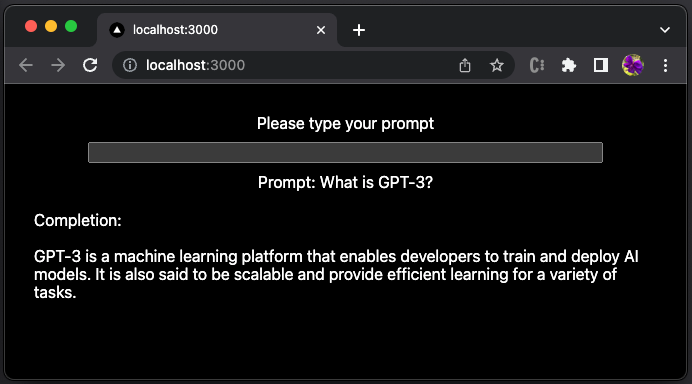Member-only story
Exploring OpenAI GPT-3 With Next.js
OpenAI has a breakthrough in large language models for the Turing test

We attended AI Hardware Summit and Edge AI Summit 2022, as well as NVIDIA GTC (GPU Technology Conference). Both conferences showed that AI continues to make exponential advances with new algorithms and new frameworks to develop them. A recent breakthrough is the introduction of language processing technologies that enable us to build more intelligent systems with a richer understanding of language than ever before.
The Turing test, originally called the imitation game by Alan Turing in 1950, is a test of a machine’s ability to exhibit intelligent behavior indistinguishable from that of a human. Turing proposed that a human evaluator would judge text-only natural language conversations between a human and a machine, and try to distinguish whether one of the two partners in conversation is a machine. If the evaluator could not reliably tell the machine from the human, the machine would be said to have passed the test.
OpenAI’s GPT-3 (Generative Pre-trained Transformer 3) is a machine learning platform that enables developers to train and deploy AI models. It is also said to be scalable and efficient with the ability to handle large amounts of data. This autoregressive language model produces human-like text. Input a short prompt, and the system generates an entire essay. It has the following capabilities:
- Content generation
- Summarization
- Classification
- Sentiment analysis
- Data extraction
- Translation
- Mathematics
- Programming
- Conversation
In this article, we are going to set up GPT-3 for text-only natural language conversations. You can be an evaluator to decide what kind of intelligence level GPT-3 currently has.
Set Up OpenAI Account
OpenAI is a non-profit artificial intelligence research company. Its goal is to advance digital intelligence in a way that is most likely to benefit humanity as a whole, unconstrained by a need to generate financial returns.

